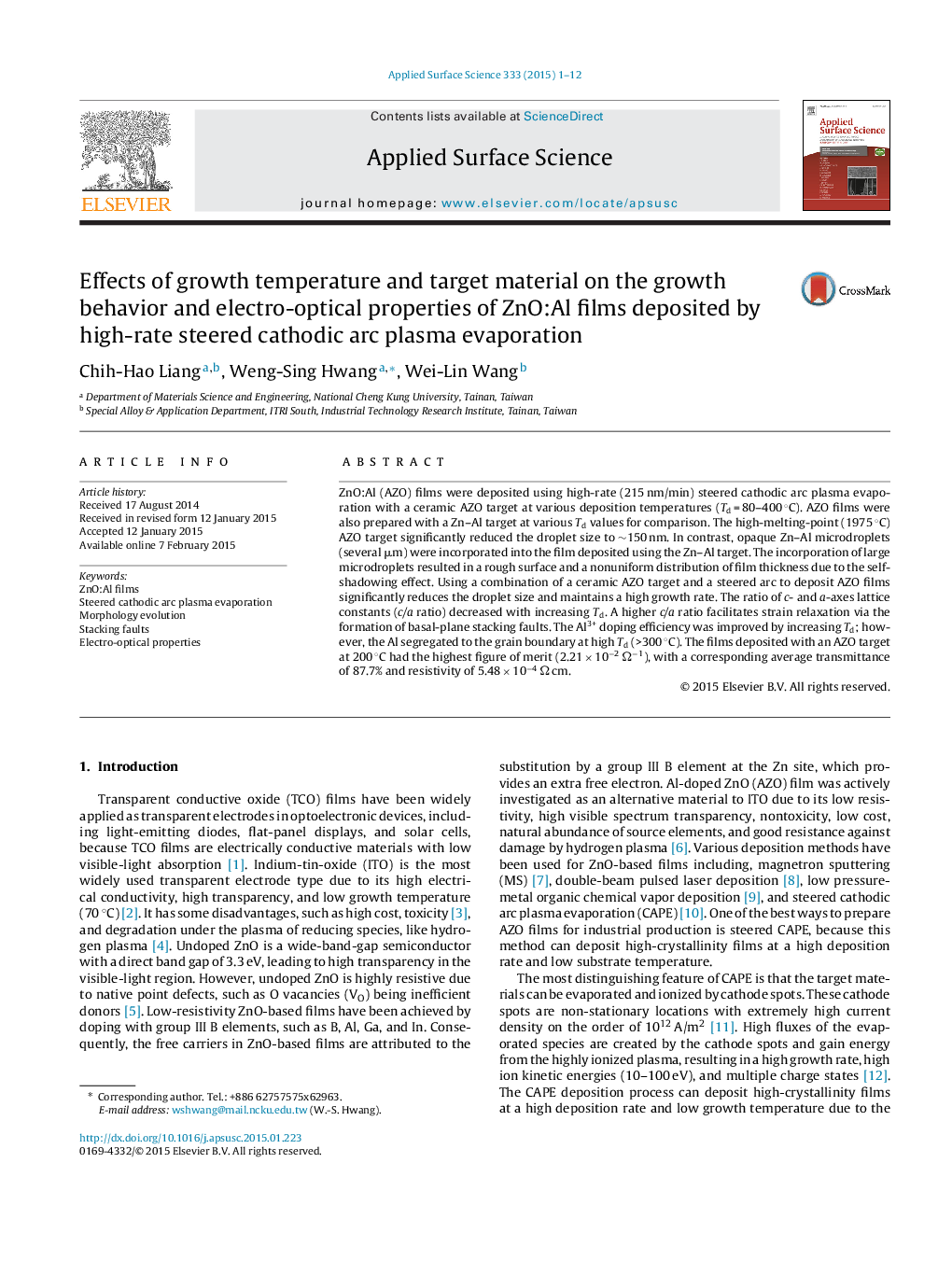| Article ID | Journal | Published Year | Pages | File Type |
|---|---|---|---|---|
| 5358794 | Applied Surface Science | 2015 | 12 Pages |
Abstract
ZnO:Al (AZO) films were deposited using high-rate (215 nm/min) steered cathodic arc plasma evaporation with a ceramic AZO target at various deposition temperatures (Td = 80-400 °C). AZO films were also prepared with a Zn-Al target at various Td values for comparison. The high-melting-point (1975 °C) AZO target significantly reduced the droplet size to â¼150 nm. In contrast, opaque Zn-Al microdroplets (several μm) were incorporated into the film deposited using the Zn-Al target. The incorporation of large microdroplets resulted in a rough surface and a nonuniform distribution of film thickness due to the self-shadowing effect. Using a combination of a ceramic AZO target and a steered arc to deposit AZO films significantly reduces the droplet size and maintains a high growth rate. The ratio of c- and a-axes lattice constants (c/a ratio) decreased with increasing Td. A higher c/a ratio facilitates strain relaxation via the formation of basal-plane stacking faults. The Al3+ doping efficiency was improved by increasing Td; however, the Al segregated to the grain boundary at high Td (>300 °C). The films deposited with an AZO target at 200 °C had the highest figure of merit (2.21 Ã 10â2 Ωâ1), with a corresponding average transmittance of 87.7% and resistivity of 5.48 Ã 10â4 Ω cm.
Related Topics
Physical Sciences and Engineering
Chemistry
Physical and Theoretical Chemistry
Authors
Chih-Hao Liang, Weng-Sing Hwang, Wei-Lin Wang,
